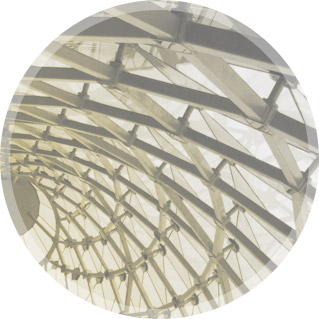University of Pennsylvania
Department of Architecture
Graduate Architecture is a comprehensive and rigorous program, preparing graduates for the full range of activities in the profession. An intensive sequence in Design Studios constitutes the focus of the program. Thorough training is also provided in history, theory, technology, ecology, society, and professional practice. Studios and courses are supported by a rigorous program in visual studies that develops skills in digital and new media.
The mission of the undergraduate program in Architecture is to develop basic skills, knowledge, and methods of inquiry in the discipline of architecture within the context of a liberal education in the arts and sciences. Faculty in the School of Design and the SAS teach the required courses in the Major and Minor in Architecture. The Major in Architecture includes courses in design, history, and theory of architecture. Student work in the design studios ranges from hand drawing and three-dimensional physical models to three-dimensional parametric modeling and 3D-printing.

Setting
With approximately 310 graduate students, the Graduate Architecture Department is housed at Meyerson Hall, in the heart of the University of Pennsylvania campus, at the corner of Walnut Street and 34th Street. In addition to design studios, exhibition spaces, classrooms, and offices, this facility includes state-of-the-art laboratories for computing and fabrication and two advanced research labs: the Digital Design Research Lab and the Building Simulation Group. Penndesign also introduced 3-D printers in the newly renovated studio spaces.

Programs
Graduate Architecture:
Master of Architecture (MArch):
The Master of Architecture is a comprehensive and rigorous program, preparing graduates for the full range of activities in the profession. An intensive sequence in Design Studios constitutes the focus of the program. Thorough training is also provided in history, theory, technology, ecology, society, and professional practice. Studios and courses are supported by a rigorous program in visual studies that develops skills in digital and new media. At the upper levels of the program students establish individual trajectories by selecting from a range of elective studios and courses with leading figures in design, technology and theory. The final year culminates in advanced design studios that include research directed by leading designers as well as the option of an independent thesis. Summer programs abroad and studios based in other countries provide opportunities for international studies. The program aims to develop critical, creative and independent thinking that realizes potentials within an ever-changing world. The Master of Architecture degree is a professional degree accredited by the National Architectural Accrediting Board (NAAB).
Master of Science in Design with a concentration in Advanced Architectural Design (MSD-AAD):
The three-semester Master of Science in Design with a concentration in Advanced Architecture Design [MSD-AAD] course of study is for architecture students with five-year professional bachelor degrees from the US and around the world.The purpose of the MSD Advanced Architecture Design program is threefold: first, to develop skills in emerging design and cross-disciplinary tools, including generative parametric software and 3-D prototyping; second, to critically engage theoretical dimensions of the contemporary architectural discourse around these techniques and their potential for cross-disciplinary collaborations; and third, to integrate advanced digital modeling techniques into a design methodology that has direct bearing on production, fabrication and construction processes. Such digital techniques incorporate real-time feedback that enhances the decision-making process of designers and cross-disciplinary teams.
Master of Science in Design with a concentration in Environmental Building Design (MSD-EBD):
The MSD in Environmental Building Design is a specialized, post-professional degree developed to train architects in the new skills and knowledge required for environmental design and especially in the design techniques with which those skills must be integrated into the practice of architecture. The one-year course of study includes coursework on building performance simulation, integrated building design, building envelopes and systems, lighting, daylighting, and the theory and practice of environmental design. Coursework is complemented and extended by a Performance Design Workshop and then explored in depth in an intensive Environmental Design Studio in the early summer.
Master of Science in Design with a concentration in Robotics & Autonomous Systems (MSD-RAS):
The MSD-RAS aims to develop novel approaches to the design, manufacture, use, and life-cycle of architecture through creative engagement with robotics, material systems, and design-computation. Students gain skills in advanced forms of robotic fabrication, simulation, and artificial intelligence, in order to develop methods for design that harness production or live adaption as a creative opportunity. Robotically manufactured architectural prototypes (part or whole) are be developed by students and presented and exhibited at the completion of the course.
Master of Science in Architecture:
The Master of Science degree, first offered in 1984, is intended for individuals with an undergraduate professional degree in architecture who wish to pursue a self-directed program of study at the advanced level. It enables students to gain a greater understanding of the relationship between the discipline and the profession. A total of ten approved courses are required, including one course in Architectural Theory and an individually directed selection of electives from the Master of Architecture program, and a qualifying exam. This degree is normally completed in one calendar year. Applicants must hold a bachelor's degree in architecture.
Doctor of Philosophy in Architecture (PhD):
The Doctor of Philosophy in Architecture is for the person who wishes to make a significant scholarly contribution to the discipline of architecture. Requirements for the degree include twenty approved courses, the passing of two language exams, a qualifying examination, a preliminary examination, teaching experience, a dissertation and a final defense. Course work from previous Master's degrees is taken into consideration when deciding the number of courses required for the Ph.D. degree. Students with a Master's degree from Penn may be granted up to 12 course units transfer credit, those with a Master's degree from another institution may be granted up to 8 towards their Ph.D. requirement.
Undergraduate Architecture: The program provides for the study of architecture on three levels of engagement: a Minor; a Major with a concentration in either Design or History, Theory, and Criticism; and an Intensive Major qualifying an undergraduate student in the Design concentration for advanced standing in the Master of Architecture professional degree program. The Major in Architecture is a studio-based liberal arts program offering two tracks or concentrations in the study of architecture. The Design Concentration includes a three-year sequence of design studios combined with courses in art history and architectural theory. The History, Theory, and Criticism Concentration includes a two-year sequence of design studios and courses in art history combined with additional coursework in art history, architectural theory, and related subjects. Students declare the Major in Architecture upon completion of ARCH 202, taken during the sophomore year. Admission into the Concentration in Design is dependent on a student earning a minimum 3.0 grade point average in ARCH 201 and 202. Upon graduation, students are awarded a four year, non-professional degree: a Bachelor of Arts with a Major in Architecture.

of Focus
1. Art & Design
2. History | Theory | Criticism
3. Materials and Construction
4. Digital Fabrication & Technology
5. Building Technologies
6. Sustainability & High Performance Build Enviroments
7. Design/Build
8. Historic Preservation

Opportunities

Facilities

Policies
Transfer Policies
Transfer Students
Transferring to a new university can be an exciting but daunting process. The College website and advising system will help you to make this transition as smoothly as possible.
As soon as you commit to coming to Penn, you should take a look at Getting Started: Step-by-Step: (https://www.college.upenn.edu/transfer-students) and start working on the items in the list. We also recommend that you contact your assigned advisor in the College Office: (https://www.college.upenn.edu/node/138) as soon as possible, if you have not already. Incoming transfer students receive the name of their advisor by mid-June.



